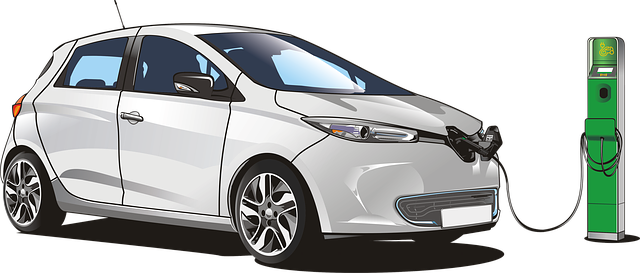What Is The Discharge Rate Of A Battery – Introduction, And Calculation?
Feb 15, 2022 Pageview:1550
Batteries play a vital role in powering modern devices. Power storage units deliver electrical current to power different devices when needed.
That is what most users know. But there is so much to batteries than meets the eye. For instance, does a battery powerful? And did you know that batteries go flat even when unused?
There are several terms you should know when it comes to batteries. They determine the type of battery you will need for your devices. They include:
Battery capacity. This stands for how much power the battery can store and for how long. Different batteries come with different capacities, which determines how much energy you will get.
Voltage. Voltage means how much energy the battery can give. We talk about 12-volt or 24-volt batteries.
Discharge rate. Many people assume that batteries only lose current when in use. But that is not always the case. Batteries have a constant discharge rate, whether in use or on the shelf.
A good battery should promise the best of these parameters. Our focus today is on the discharge rate.
What Is The Discharge Rate Of A Car Battery?
Batteries lose their charge even when they are just sitting inside your parked car. They will also lose when disconnected and stored.
There is nothing you can do about it. Chemical reactions inside batteries are always happening whether the battery is connected or not. You can try using a high-quality float charger to keep it in a charged state under storage.
Now, the biggest question is how and how much a battery drains? The battery will die eventually. Knowing how it happens can help you protect it better.
A typical car battery will take only about 2 to 3 weeks to run flat. This is because of a parasitic draw by the car’s electronic system.
If you disconnect the negative terminal, your battery will discharge at 5% per month.
How Fast Does A Car Battery Drain?
First, understand why your battery drains when connected to the car. The primary reason is its electronics. They never fully turn off when the vehicle is switched off.
Cars havespecial radios, GPS systems, alarms, and other systems that depend on electrical power.?
They slowly drain the battery even when removing the ignition key.
We call this ‘parasitic draw.’
Parasitic draw is slightly higher in newer cars than in older ones. This is because they have more electronic systems.
Normally, a parasitic draw is about 50mA or 0.05 amps. This range can differ depending on the battery’s chemistry.
If you have a car that gets more than 50mA, you don’t need to worry, especially if it’s new. However, it would be a great idea to run a parasitic draw test or have a mechanic check it for you.
If you want to keep your battery parked, understand how fast it discharges first. You may need to drive it at least a few times weekly. Check if the car draws between 50mA and 85mA. Keeping such a battery for more than a week without running it will soon drain it completely. You won’t have any more power to ignite your engine.
Here is a table showing the discharge rate of your car battery:
You will need this information to calculate the discharge of your car’s battery. In summary, a battery draws more depending on the number of electronic units it has. Some car owners buy extra batteries to ensure a constant power supply.

How Do You Calculate Battery Discharge?
First, you need to understand what the discharge rate is all about. Battery capacity is often specified by providing it as a function of its time to discharge fully.
Battery capacity is specified as Cx. Here, x is the time in hours that the battery will take to discharge. C10 is equal to Z, also Cxxx. This means the battery has Z capacity when discharged in 10 hours.
We can half the discharge rate of the battery. This will also influence the time it takes to discharge the battery, taking it to 20 hours. The battery capacity will then rise to Y.
You can find the discharge rate when discharging at 10hrs by dividing its capacity by time. This means C/10 is the charge rate. It can also be written as 0.1C.
When the battery is discharged in 10hr, the charge rate is specified at C20/10. These notations are relatively complicated. They may be possible when you use higher or lower charging rates in short periods.
A Simplified Approach:
You need to know the load current (I) in amperes. This figure represents the amount of energy the device is expected to draw from the battery. It’s represented in Amperes (A).
Divide capacity C, which is in ampere-hours by the current. You will get the time in hours.
C(Ah)/I(A) = T (h)
Sometimes you may know only the load power (P) in Watt (W). In this case, you will need to first convert Ah into Wh. Multiply the capacity in Ah by the Voltage (U) in volts (V)>
C(Ah) x U(v) = C (Wh)

You can also divide the capacity in watt-hours (Wh) by the load power (P), in watt 9W). This gets you the time.
C/P = T
If you are looking for more accurate results at a higher current without using current, consider the internal resistance of that cell. Less energy is produced at high discharge rates. The battery loses more heat too.
How Fast Do Batteries Discharge?
All batteries experience the same measure of self-discharge. However, there are some that discharge faster depending on certain factors.
Here are factors that determine battery discharge rate:
Battery type. Different conditions affect different battery chemistries differently. For example, a lithium-ion battery will not face the same effect under high temperatures as a lead-acid battery.
Temperature.?Warmer environments hasten the discharge rate of a battery. And colder temperatures slow the reactions.
Sulfating. Lead-acid batteries face a buildup of lead sulfate crystals when the battery is stored without a full charge. This reaction increases the discharge rate.
Also, the age of a battery and its capacity plays a role in how it discharges. You can get more use to your batteries if you understand these factors well.
Leave Message
Hottest Categories
-
Hottest Industry News
-
Latest Industry News










